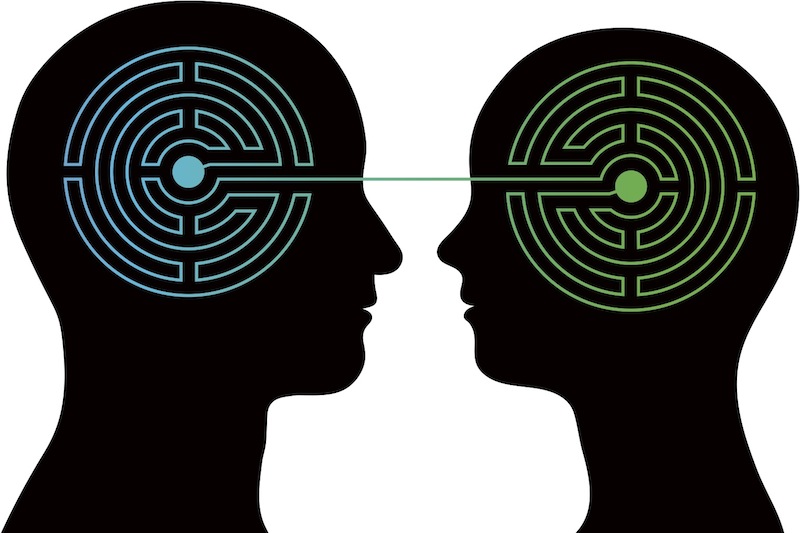
What if you could zap your partner or friend so they "got you" and felt more loving toward you? That sci-fi notion may not be ready to serve up just yet, but scientists have found that a new brain-training method may help people feel more empathy.
Showing people visual cues about their brain state can improve their ability to focus on affection and tenderness, at least in a lab setting. The new technique, detailed today (May 21) in the journal PLOS ONE, could perhaps be used to treat people struggling with a lack of empathic feelings, such as women with postpartum depression or those with antisocial personality disorder.
"One could potentially develop brain neurofeedback protocols in which you can train the brain," to ramp up empathic feelings, said study co-author Dr. Jorge Moll Neto, a cognitive neuroscientist at the Instituto D'Or de Pesquisa e Ensino in Brazil.
Empathy disorders
Empathy deficits play a role in conditions ranging from autism to narcissistic personality disorder to antisocial personality disorder. And even those without a psychiatric condition often underestimate the social pain of others. [Top 10 Controversial Psychiatric Disorders]
Compassion meditation, which involves repeating certain phrases or focusing on thoughts to increase feelings of loving kindness, has been shown to boost feelings of empathy. But though Buddhist monks have practiced compassion meditation for hundreds of years, meditation doesn't provide feedback to participants on how well they're doing.
To see if they could train people to control their level of empathy, Neto and his colleagues asked 25 healthy volunteers who had no training in meditation to sit in a functional magnetic resonance imaging scanner while thinking about a time when they felt particularly tender or affectionate toward loved ones.
Sign up for the Live Science daily newsletter now
Get the world’s most fascinating discoveries delivered straight to your inbox.
The team then used that information as a baseline to determine how the participants' brains lit up while experiencing loving feelings.
The next day, the volunteers were asked to go back into the scanners and asked to focus on feelings of empathy.
A computer algorithm compared the baseline brain activity when participants were thinking about loved ones with their brain activity the second day, when they were asked to conjure up feelings of empathy.
For half the participants, software then immediately converted that change into a rendering of a ring, which the participants viewed in real time. Others did not receive this feedback.
The more closely their feelings matched those from the day before, the more perfectly round the ring appeared, whereas less empathetic sentiments shown on the brain scans for the second day were translated into more distorted rings.
"We wanted them to strongly feel those emotions, and the ring was just working as a signal to tell them if they are going in the right direction," Neto told Live Science.
Empathy exercises
After four 15-minute training sessions in a single day, study volunteers showed more activity in the brain regions responsible for empathy compared to those who did not get the guided feedback on their brain state.
The new method is an improvement over other methods of neurofeedback that train regions of the brain associated with emotional processing, the researchers say. For instance, training that relies on an electroencephalogram (EEG) doesn't provide a highly detailed understanding of the brain's state, so it can take 20 sessions for such training to be effective.
The new technique could one day be used in situations where feelings of empathy are lacking. For instance, women suffering from postpartum depression could use these methods to increase their bonding with their baby, while getting simultaneous visualization training to decrease negative emotions such as anxiety and frustration, Neto said. Couples could also use the technique in therapy to boost their compassion for each other.
Before such training could be widely applied, the team needs to show it actually impacts people's feelings of empathy beyond the lab. And simply being capable of conjuring up empathic feelings may not be enough, as even psychopaths can feel empathy when they want to.
Follow Tia Ghose on Twitter and Google+. Follow Live Science @livescience, Facebook & Google+. Original article on Live Science.

Tia is the managing editor and was previously a senior writer for Live Science. Her work has appeared in Scientific American, Wired.com and other outlets. She holds a master's degree in bioengineering from the University of Washington, a graduate certificate in science writing from UC Santa Cruz and a bachelor's degree in mechanical engineering from the University of Texas at Austin. Tia was part of a team at the Milwaukee Journal Sentinel that published the Empty Cradles series on preterm births, which won multiple awards, including the 2012 Casey Medal for Meritorious Journalism.









